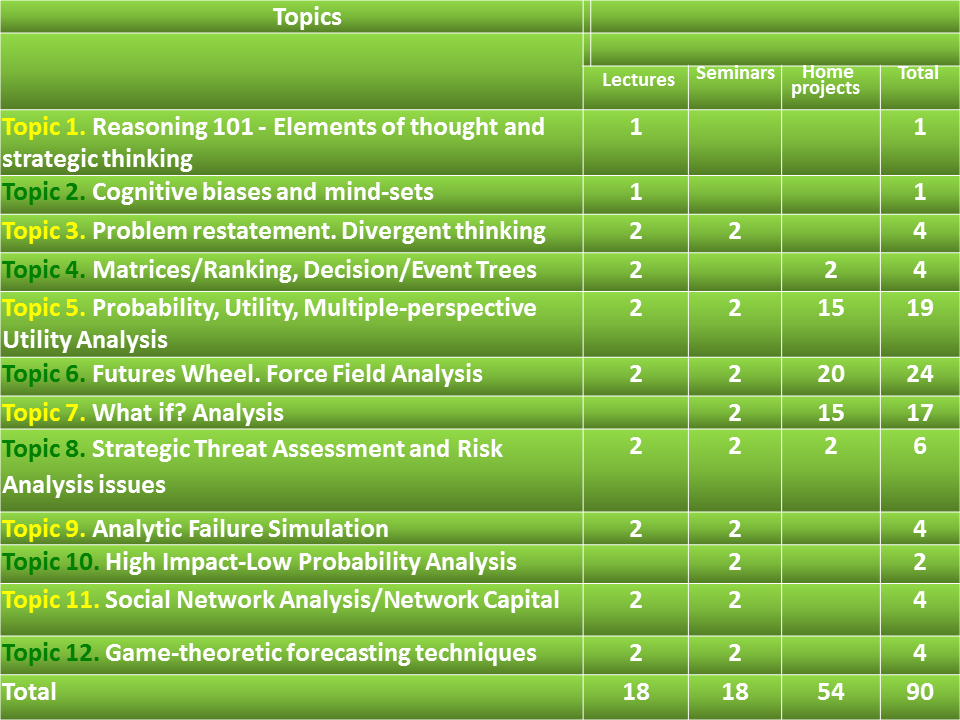Answers sought through futures analysis typically include the combination of the following: What potential events could occur? What future patterns could emerge? What will be the effect of future fundamental drivers?
The overall purpose of futures work in strategic analysis is to:
- Provide a strategic context within which to understand emerging threats;
- Provide a foresight capacity to allow the development of proactively targeted strategies;
- Narrow the range of uncertainty;
- Ensure that this understanding is provided in an appropriate form to the appropriate decision makers at the appropriate time.
The Futures Wheel is a consequence analysis tool mainly used to consider effects of an event or an action. It is also useful for analysing a particular trend. The Futures Wheel provides rapid visualization of a cause and effect relationships of consequences and their implications through a chosen number of tiers.
The Force Field Analysis often used in conjunction with the FW is a comparative tool that assists examination of the relative weight of drivers that act for (facilitators) or against (inhibitors) change. It can be conducted for the current situation and for a moment in the future.
The key to force field analysis is to assess when inhibitors and facilitators are most vulnerable to external pressure, and consequently where and when effort is likely to be best expended.
Delegates are taken on a guided tour of a real-life forecast. FW/FFA techniques together with pair ranking and pro-cons-fixes subsequently form the core of the assignment for Home Project 2.





